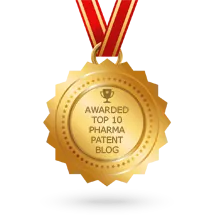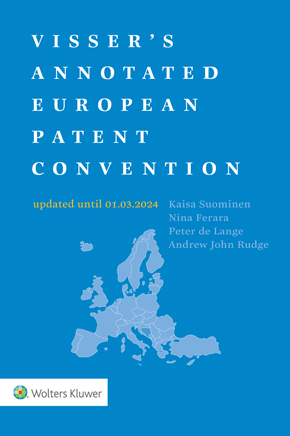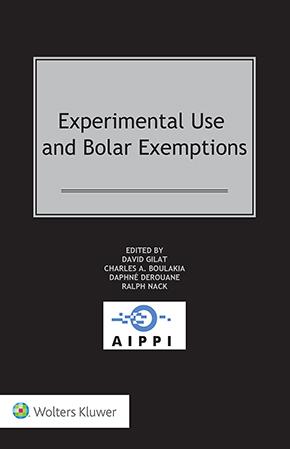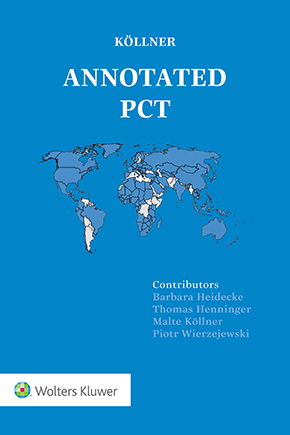More Than a Feeling: UPC, Rewriting the Score for Pharma at BIO 2025
June 25, 2025
In 1976, Tom Scholz—a MIT-trained engineer and sonic perfectionist—spent months layering guitar tracks in the basement of his Boston apartment to produce More Than a Feeling, a song whose depth came not from its melody, but from its structure. The track was not written; it was architected.
Nearly five decades later, the biotech and pharmaceutical sectors are undergoing a similar shift. Patent strategy is no longer about protection alone; it is about construction. This structural turn found its echo in Boston, where over 20,000 professionals convened for BIO 2025. While the conference foregrounded licensing, collaboration, and translational innovation, the UPC emerged in the background as a defining force—quietly remastering the rules of IP orchestration across Europe.
The UPC's Early Output
Two years into its operation, the UPC is no longer experimental. As of June 2025, the court has recorded 883 cases, 26% of which concern the pharma-biotech sector. These include 320 infringement actions and 369 revocation proceedings. Unitary patents account for approximately 28% of all newly granted European patents (See here). Patentees succeed in roughly 50% of merits decisions, but only in 45% of cases involving preliminary injunctions.
The message is clear: the UPC is procedurally active, technically sophisticated, and strategically significant.
Strategic Layers for Originators
Originator companies—especially those advancing assets through Phase II and III—are now composing IP strategies in layers, not lines. The first layer involves deploying split portfolios, blending unitary and national rights. Unitary patents are used in core commercial territories to access the UPC’s injunction potential, while national patents are retained in jurisdictions where procedural flexibility or divergent jurisprudence offer tactical advantages.
The second layer is regulatory. Supplementary protection certificates (SPCs) remain outside the unitary framework. While the UPC has affirmed jurisdiction over SPCs tethered to unitary patents (see Boehringer v. Zentiva, SPC No. 679, decision of the Lisbon Local Division), the proposed EU-wide SPC regulation (COM(2023) 231) remains in flux. Until a unified SPC is enacted, dual enforcement before national courts and the UPC will continue.
The third layer is contractual. Sophisticated license and development agreements now include UPC injunction buffer clauses—pre-negotiated terms that allow immediate adaptation of launch or marketing plans if a unitary injunction is issued. These clauses, once academic, are becoming the industry standard for cross-border transactions.
The fourth and most dynamic layer is analytics. Originators increasingly rely on data-driven litigation maps, triangulating EPO opposition history, critical claim clusters, and division-specific behavior within the UPC to plan filings and anticipate risks.
Strategic Counterpoints for Generics
Generic manufacturers are not merely defending against this multilayered architecture—they are developing countermelodies of their own.
One strategy involves targeting unitary patents for revocation via UPC proceedings, seeking to collapse cross-border exclusivity in a single stroke. The UPC’s centralized nullity jurisdiction offers generics a means to scale their litigation investments across Europe efficiently.
Another strategy focuses on therapeutical use patents. The UPC’s May 2025 ruling in Sanofi/Regeneron v. Amgen (UPC_CFI_505/2024, decision by the Düsseldorf Local Division) provides critical guidance. The court introduced a two-pronged test: availability of the generic product for the claimed indication, and knowledge or intent by the manufacturer. Passive inclusion in the Summary of Product Characteristics ("SmPC") does not amount to infringement unless amplified through promotional channels.
This ruling gives generics an opportunity to structure their launches strategically. By tailoring packaging, communications, and market behavior to avoid evidentiary thresholds of intent, generic companies may reduce litigation exposure even in high-risk therapeutic categories.
A third strategy is procedural. Generics may pursue dual-path invalidity campaigns, combining UPC challenges on core patents with national invalidity actions on SPCs, especially in high-volume countries such as Germany or the Netherlands.
Finally, generics may adopt pre-emptive negotiation frameworks, offering conditional licenses or “early entry” deals post-AMM to mitigate the risk of pan-European enforcement while positioning themselves as preferred fallback suppliers.
While the current strategies of generic manufacturers remain legally valid within the framework established by the Sanofi/Regeneron v. Amgen decision, they could be gradually restricted as the UPC's case law becomes more established. Although still young, the court tends to draw more consistent guidelines on infringements based on claimed therapeutic use, refining the distinction between objective criteria (availability of the product) and subjective criteria (knowledge or intention of the manufacturer).
As other decisions enrich this body of case law, a more demanding line of jurisprudence could emerge, raising the question of the limits within which a generic manufacturer can adjust its behavior to avoid the alleged intent without sliding into a form of bad faith. Such a development could lead to the introduction of a higher standard of proof, imposing on manufacturers not only formal abstention, but also positive obligations of neutrality or commercial prudence, thereby reducing the current tactical space.
The Technical Core of UPC Litigation
One of the UPC’s most distinctive features is the involvement of technical judges. These are not passive observers but engaged analysts of scientific and experimental evidence.
In Franz Kaldewei v. Bette (UPC_CFI_2/2023, decision of July 3, 2024, Düsseldorf Local Division), the court issued the first pan-European permanent injunction. Crucially, the panel’s technical judge, Dr. Ulrike Voß, led the review of auxiliary claims and inventive step. The judgment aligned closely with EPO reasoning, confirming that UPC jurisprudence is anchored in the European Patent Convention but now enhanced by procedural immediacy and enforcement power. This convergence reinforces the idea of a more coherent European judicial ecosystem, in which EPO decisions are reflected almost directly in the UPC, reducing uncertainty for both applicants and defendants.
For originators, this elevates the burden of proof. Validity arguments must be scientifically coherent and well-documented. For generics, the cost of litigation rises: nullity campaigns must now combine doctrinal argumentation with data integrity, trial design critique, and evidentiary clarity.
The SPC Reform: A Discordant Note
A significant source of uncertainty in the current legal framework lies in the status of supplementary protection certificates (SPCs) and the ongoing EU reform to establish a unitary SPC system. Under the present regime, SPCs remain national instruments governed by Regulation (EC) No 469/2009, and their enforcement—whether validity or infringement—falls within the exclusive jurisdiction of national courts when the underlying basic patent is a traditional European patent.
The introduction of the UPC has added a layer of complexity. While the UPC has declared itself competent to hear cases involving SPCs linked to a unitary patent—as in the case of Boehringer v. Zentiva, SPC No. 679 — there is no legislative provision in the UPCA explicitly addressing SPC jurisdiction. Articles 32–34 of the Agreement on a Unified Patent Court do not refer to SPCs, which has led some commentators to question whether the UPC’s current competence is de facto rather than de jure.
Meanwhile, the European Commission's 2023 proposal for a unitary SPC (COM(2023) 231) aims to harmonise the procedure through a central examination and grant model administered by the EUIPO. However, the proposed regulation explicitly refrains from conferring jurisdiction to the UPC for the enforcement or invalidation of these future unitary SPCs. Instead, it maintains a bifurcated approach: grant at the EU level, but litigation at the national level, even where the underlying patent is unitary.
This disconnect threatens to undermine the very logic of procedural unification. For originators, it introduces jurisdictional fragmentation at precisely the stage where regulatory exclusivity is most commercially critical. For generics, it creates forum shopping incentives and litigation inefficiencies. The UPC, designed as a one-stop enforcement forum for cross-border IP disputes, risks becoming irrelevant in a domain where exclusivity extensions are most valuable.
Strategically, patentees must thus continue to manage SPC enforcement through national courts, even where their core patent strategy has migrated to the UPC. The contradiction is both legal and economic: harmonised protection without harmonised enforcement. Unless corrected in future revisions, the current reform risks amplifying procedural dissonance rather than resolving it.
Orchestrating Risk, Composing Value
Just as Tom Scholz did not record More Than a Feeling in a single take, companies cannot improvise their UPC strategy. They must compose it.
Every element—unitary patent, SPC, national fallback, buffer clause, scientific dossier, forum choice—becomes a layer in a multi-track recording. When aligned, these layers resonate not only legally, but commercially.
The UPC is not just a forum for enforcement. It is a space of resonance. For those who understand its rhythm, it offers more than a feeling—it offers compositional power.
You may also like















A. Nonymous
UPC ARTICLE 3 Scope of application This Agreement shall apply to any: (b) supplementary protection certificate issued for a product protected by a patent; UPC ARTICLE 2 Definitions For the purposes of this Agreement: (g) "Patent" means a European patent and/or a European patent with unitary effect. UPC ARTICLE 32 Competence of the Court (1) The Court shall have exclusive competence in respect of: (a) actions for actual or threatened infringements of patents and supplementary protection certificates and related defences, including counterclaims concerning licences; (b) actions for declarations of non-infringement of patents and supplementary protection certificates; (d) actions for revocation of patents and for declaration of invalidity of supplementary protection certificates; (e) counterclaims for revocation of patents and for declaration of invalidity of supplementary protection certificates;